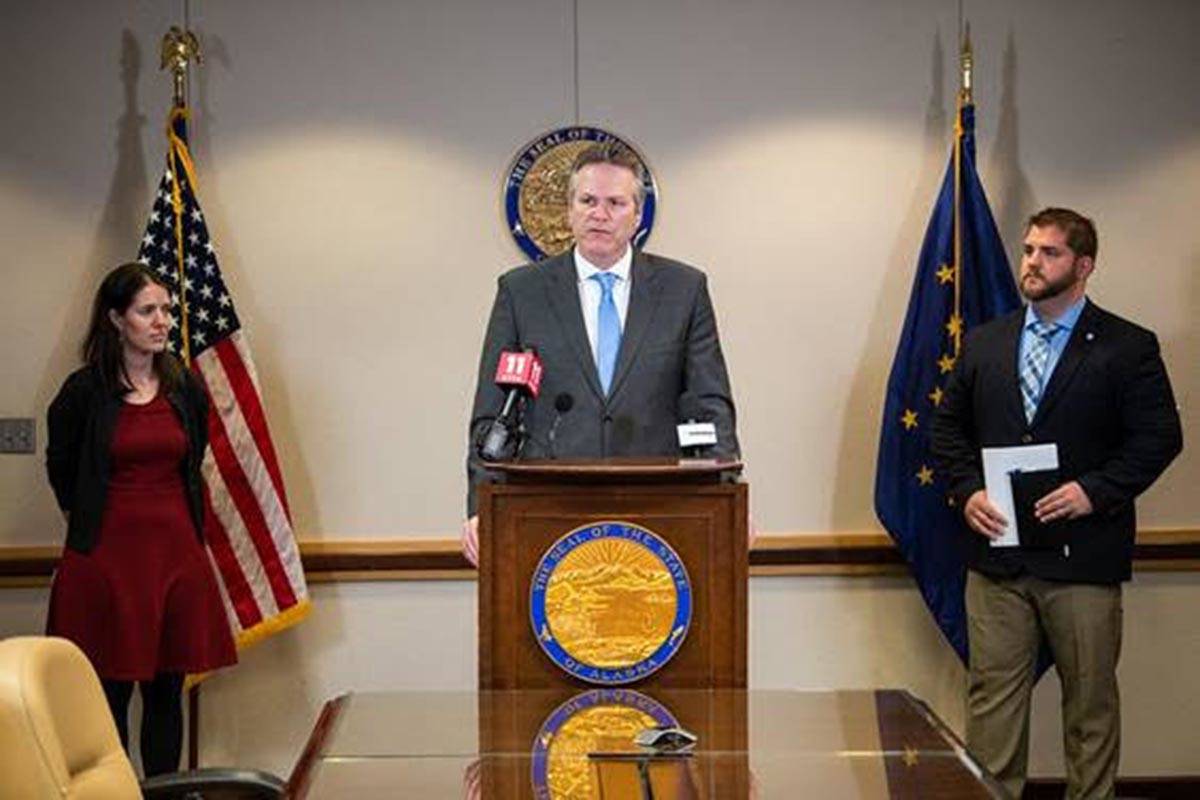With the increasing casualties from the COVID-19 virus, commonly known as the coronavirus, many are wondering what preparations the state government of Alaska is making- if any.
“We’ve been preparing for the potential of coronavirus coming to Alaska for at least a month and a half,” said Gov. Mike Dunleavy in a conference from Anchorage on Monday. “We believe Alaska is prepared to deal with this issue as well or better than any other state.”
Dunleavy said that the state government had been in daily contact with the Centers for Disease Control and Prevention in Atlanta and the federal government in Washington, D.C., about preparations and support. Dunleavy also said experts plan to meet with state legislators to update them on preparations.
He said his administration intends to ask the state Legislature for $4 million, and the federal government for $9 million, in order to support an increased operational tempo for labs, public health nurses and other resources in the fight against the virus.
“We think it will probably spread here,” Dunleavy said. “We’re prepared for the possibility of the arrival of this virus to Alaska.”
Experts at the conference said that virus will predominantly target the elderly, and those with compromised cardiovascular or respiratory systems. According to the World Health Organization, the young and healthy are less likely to be severely affected by the disease.
“What we know from other countries is that the elderly and disabled are by far the most vulnerable populations,” said Department of Health and Social Services chief medical officer Dr. Anne Zink at the conference. “Underlying heart and lung conditions and the elderly are disproportionately affected. Don’t go visit your grandma if you have your sniffles.”
Zink said that washing your hands, avoiding touching your face, and decontaminating commonly touched surfaces are all good strategies for avoiding contracting the respiratory disease. The disease cannot spread through packages or cargo, Zink said, or else the outbreak bloom would have occurred differently. Alaska is also expanding its testing for coronavirus in suspected individuals from CDC-supported labs in Anchorage and Fairbanks.
“If you’re getting really sick and you can’t breathe and you’re really concerned, call your general care provider, so they can be prepared for you,” Zink said. “At the end of the day, we’re Alaskans. We plan and we prepare and we help each other.”
DHSS has also been sending public health nurses to outlying communities to help them stand up their own resources and response plans, Zink said. The goal is to make sure all Alaskans are protected from the respiratory disease, from the cities to the very edge of the wilds, Zink said. Zink also mentioned that the CDC has the most up to date data and best practices for any number of scenarios.
“We’ve been working on this for over 5 weeks now. We want to make sure we’re prepared,” Department of Health and Social Services commissioner Adam Crum. “We feel like we’ve done as best as possible. This is a very well rounded response.”
• Contact reporter Michael S. Lockett at 757.621.1197 or mlockett@juneauempire.com.

